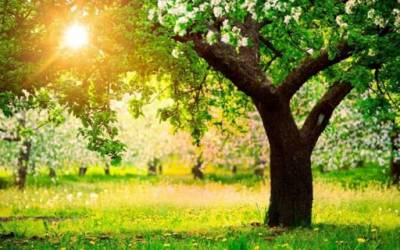 Most people are able to recognize the signs of heat stress in people and animals, but heat stress in trees is less recognizable and just as dangerous. Homeowners who live in hot, dry climates should pay special attention to their trees during the summer, especially during the months of July and August. But it can also be an issue for those of us who live in areas where the hot season is shorter.
Most people are able to recognize the signs of heat stress in people and animals, but heat stress in trees is less recognizable and just as dangerous. Homeowners who live in hot, dry climates should pay special attention to their trees during the summer, especially during the months of July and August. But it can also be an issue for those of us who live in areas where the hot season is shorter.
Treating heat stress as soon as you recognize the signs goes a long way toward keeping your yard healthy and strong.
What Causes Heat Stress?
All plants rely on a regular supply of water to keep them healthy and cool. The water is usually absorbed through the roots of each tree and it travels all the way through the plant until it reaches the leaves. Excess water is released through the leaves as dew. During hot weather the process of water traveling through the trees speeds up, causing the tree to absorb less water and they become dehydrated.
Heat Stress Signs
Take a close look at your trees to see if they are becoming stressed by the heat. The first sign of dehydration you are likely to notice is a generally dried out look to the leaves. Some trees have leaves that droop and feel crisp on the edges. The leaves may also turn yellow. Trees that usually have blooms on them will stop blooming if they become dehydrated, and fruit will drop off the tree before it’s ready. Smaller trees, or those without blooms, may look like they are wilting.
How To Combat Heat Stress
Watering your trees as deeply as possible is an important way to fight heat stress. Some homeowners water their trees on a schedule so they don’t forget when it’s time to do it.
It’s best to water each trees deeply to allow the roots to absorb and hold water. Many homeowners bury a drip hose underneath mulch around their trees so they can just turn on the hose when the trees need water. The use of a timer makes it so your don’t even need to remember to turn on the hose.
Another good option to place a bucket next to the tree place a small hole in the bottom fill up the bucket. The small hole allows the water to seep out slowly and absorb deeper into the soil and thus down into the root zone of the tree. Watch your trees and adjust your watering schedule according to how your trees are reacting to the water. Overwatering can be detrimental to trees as well, so try to strike a balance that keeps your trees healthy.
Check out what Ed had to say about us on Google:
“The three person crew from a Urban Forest Pros showed up on time and immediately got to work. I was really impressed with their professionalism and especially the care/respect they showed for my property. They did a thorough and complete job off pruning my oak tree and left the job site totally cleared of debris. I highly recommend this company for all of your tree care needs.”
⭐⭐⭐⭐⭐
5/5
(Aug 26, 2020)
This post first appeared on https://www.urbanforestprofessionals.com